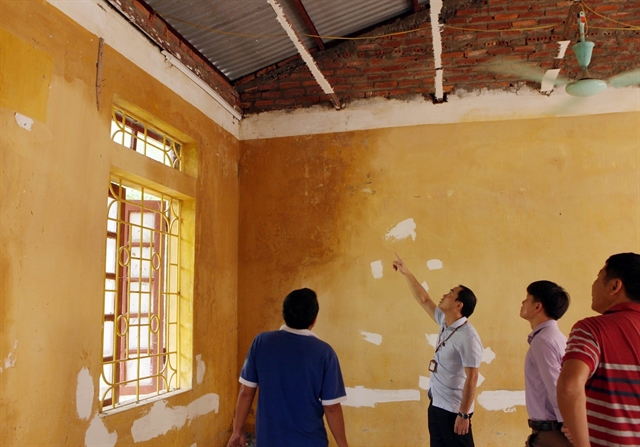 Opinion
Opinion


|
| Leaders from the Than Uyên District Division of Education and Training in the northern mountainous province of Lai Châu check classrooms at the Mường Kim Junior Secondary School for the new school year 2019-20. — VNA/VNS Photo Quý Trung |
Phạm Hùng Anh, director of the School Facilities and Equipment Department under the Ministry of Education and Training, spoke to the Lao Động (Labour) newspaper about preparations for the coming new school year.
How are provinces and cities preparing for the new school year?
The Ministry of Education and Training (MoET) has sent guidance letters to localities, and so far many of them have made preparation plans.
Some of them have good plans. For instance, northern provinces including Lào Cai, Điện Biên and Sơn La focused on strong foundations, wall and roofs. Thus, for about VNĐ30-40 million (US$1,300-1,700), they can build one strong classroom.
When we inspected those provinces, local authorities confirmed that they have enough classrooms for the new school year, and that surprised us.
How are teaching aids supplemented for the new first grade curriculum?
The MoET promulgated Circular 05 about the list of teaching aids for first grade a year ago. The new list is similar to the old one, but included several new things. For instance, it has new teaching materials for civic education, gender, abuse prevention and traffic safety. The list also pays attention to the quality of the materials so that teachers can re-use them many times.
I can confirm that the MoET has given enough guidance for the new school year, and provinces and cities have followed the guidance well.
What is the MoET doing to resolve shortage of land for classrooms?
In big cities with dense populations, schools do not have enough land, so the number of students in each class is too high.
For instance, Cầu Giấy District planned to have about 25,000 people by 2020, however, at present it already has 29,000, far exceeding the plan. It is forecast to have about 45,000 people by 2030. Increasing populations put great pressure on not only the school system, but also transport infrastructure, healthcare and housing.
To improve, in the short term, provinces and cities should make better population plans and forecasts, because economic development will lead to internal migration. At present, big cities do not pay enough attention to land fund for education.
In the long term, the MoET asked localities to check and rearrange the school system. The MoET adjusted several norms for school facilities. In rural areas, the minimum area for each student is 12sq.m but in big cities, the norm is only eight square metres.
The MoET allows schools in central areas to have more storeys if they ensure norms about foundation and framework. After the instruction, several schools implemented it well and have built more classrooms.
One more measure is that, at present, many schools do not use their rooms effectively, which means the arrangement of rooms is not reasonable. If a room is not used regularly, schools should re-arrange it, or take advantage of it to become a classroom.
For instance, the MoET regulates that the office for principals is no more than 20sq.m, but in fact, many schools use a large room as the principal’s office. These must be checked and re-ordered to have more space for classrooms. It will help ease difficulties over land for schools. — VNS




